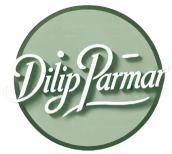These all terms related with database filling process in Laravel. So when you create a CRUD application in Laravel for for example posts data, the best practice would be to..
- Create a Model: Define the
Postmodel to interact with thepoststable in the database. - Create a Migration: Define the table structure (columns) for the
poststable (e.g., title, content, etc.). - Create a Controller: Define the CRUD operations (create, read, update, delete) in a
PostController. - Create Views: Use Blade templates to create views for creating, displaying, editing, and deleting posts.
- Create Routes: Define routes for each CRUD operation (using
GET,POST,PUT, andDELETE).
You can generate all of these at once using a single Artisan command:
php artisan make:model Post -a
This will create:
- The Post model.
- The Migration for the
poststable. - The Controller (
PostController). - Optionally, a Factory and Seeder for generating fake data.
Steps:
- Define the migration for the
poststable. - Create the controller with methods for CRUD actions.
- Set up routes for the CRUD operations.
- Create views for each operation (e.g., create, edit, show, index).
This approach keeps everything organized and follows best practices for a Laravel CRUD application.
In Laravel, migrations are used to define the database table structure, such as columns and data types. Factories use the Faker API to generate fake data for models, often used in testing or seeding. Seeders are used to populate the database with data, either by importing real data (e.g., from a CSV file) or by invoking a factory to generate fake data. Typically, you can create models, factories, seeders, and controllers together using a single Artisan command for efficiency. Seeders and factories help automate database population, while migrations manage the schema.
